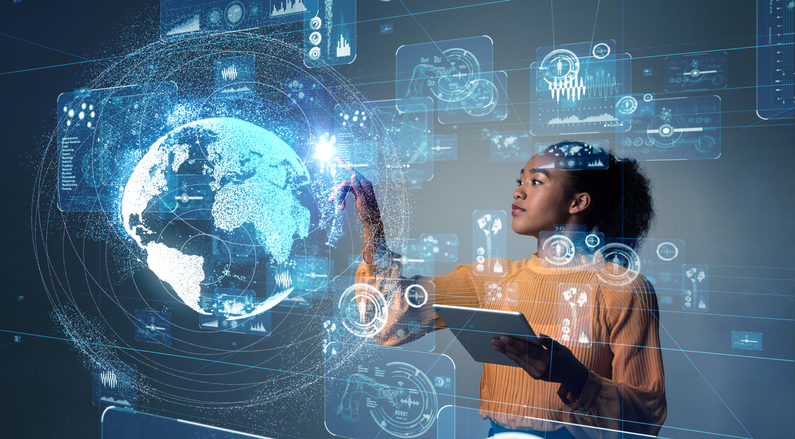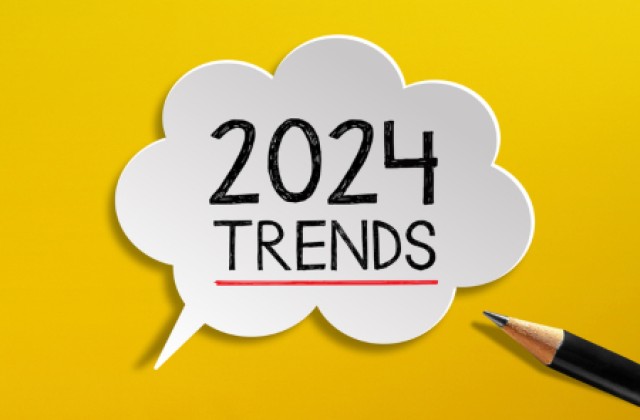 The press is full of articles on why businesses need AI because it is expected to make a tremendous impact. The McKinsey Global Institute estimates that by 2030, the additional annual global economic impact will be $13 trillion, a figure that equals about 62 percent of the total current U.S. GDP. Gartner estimates that by the end of 2024, 75 percent of organizations will have moved from merely piloting AI to making it operational, and AI made their list of the Gartner Top 8 Supply Chain Technology Trends for 2020.
The press is full of articles on why businesses need AI because it is expected to make a tremendous impact. The McKinsey Global Institute estimates that by 2030, the additional annual global economic impact will be $13 trillion, a figure that equals about 62 percent of the total current U.S. GDP. Gartner estimates that by the end of 2024, 75 percent of organizations will have moved from merely piloting AI to making it operational, and AI made their list of the Gartner Top 8 Supply Chain Technology Trends for 2020.
AI has made explosive progress since 2012 when a grad student from the University of Toronto won the ImageNet Challenge by a huge margin using deep learning, at the time considered a fringe method. Ever since, deep learning has taken Silicon Valley by storm, and AI has spread into all sectors, including supply chain, to address vexing problems previously considered unattainable. With algorithmic advancements, huge amounts of data and better computing infrastructure, AI has shown promise, making impressive gains in predictive accuracy and speed, far exceeding the cognitive capacity of humans.
The role of humans in AI
But as much as AI is growing in importance to businesses, the role of humans is also more critical than ever. With all the focus on automation (and accompanying fears of job losses), I believe that the idea of a “lights out” or fully autonomous supply chain overemphasizes eliminating the role of the human. We humans are essential to AI because we can provide contextualization, conscience and collaboration.
AI has made tremendous progress but still does not pass the famous Turing Test, devised in 1950 to evaluate whether a machine can think like a human. Examples of areas where machines fail to match our thinking are in understanding cause and effect, reason, and judgement under uncertainty, all of which depend on context.
Humans understand the context
Consider the planning problem of lead times for your average car, which may have more than 30,000 parts. No human has the time or capacity to build a plan that accurately estimates when each of those parts will arrive, so inevitably a planner must guess, resorting to shortcuts, such as assuming related parts from a supplier will have the same lead time, which may not be true. Machine learning can use the historical data to predict what the likely lead time will be, replacing a human’s assumptions and guesses. Combine these 30,000 models with automation and you get the Self-Healing Supply Chain, which can detect variances from plan, auto-correct minor ones and alert the planner to the exceptions for her to address. This kind of application significantly increases accuracy and improves productivity.
But what happens when a disruption shutters plants, delaying the flow of a significant source of these parts? History is no longer an accurate predictor of arrival, throwing a wrench in the machine learning’s algorithmic gears, but a human understands the cause and the effect and can apply reason and judgement under this kind of uncertainty. When lead times are up as much as 200 percent or more, a planner uses her contextual information and abundant domain expertise to make the best decisions possible. When patterns are more reliable, machine learning shifts into gear to provide humans additional insight, but until then, we want to keep the human at the wheel.
Humans have a conscience
Another reason we want humans driving the use of AI is to use our conscience to manage the unintended consequences of AI. McKinsey describes AI as a double-edged sword, given its positive and negative impacts, which are sharper than most new innovations and less well understood. Just a few examples of risks that make headlines are fatal crashes from self-driving cars, job losses from automation, manipulation of political campaigns and state surveillance.
When it works as we want it to, AI can seem like magic, but when it fails us, calls increase for regulation to put the genie back in the bottle. I believe this approach is neither feasible nor desirable. After all, the sharpness of the sword blade applies to positive benefits as well. In addition to the business gains that drive Silicon Valley, there are ample examples of AI for good, from health care to hunger to human rights and more.
Earlier in her career, Dr. Fei-Fei Li invented the ImageNet Challenge mentioned above, but the Stanford professor now leads the Human-Centered AI Institute. She has said, “It’s time to bring AI together with social science, with humanities, to really study the profound impact of AI to our society, to our legal system, to our organizations, to our society to democracy, to education, to our ethics.” Her voice is one of many ensuring we bring conscience to the application of AI, a task only suitable for humans.
Humans know how to collaborate
Finally, humans can collaborate and in ways machines cannot. In fact, some define supply chains by their relationships. Academics Doug Lambert and Matias Enz write: “Thus, supply chain management is actually about relationship management. A supply chain is managed, link-by-link, relationship-by-relationship, and the organizations that manage these relationships best will win.” These relationships work best when the links are connected and all can share the same view of what is happening in the supply chain based on visibility derived from the same data. This visibility allows real-time collaboration to occur when people in different parts of the business can share ideas based on a common understanding of the data, leveraging the wisdom of the crowds.
When a disruption occurs, the linked nature of supply chains means that its impact will not be isolated to one area but will have repercussions across the network. So when lead times are delayed, the pain felt by procurement will also affect production, distribution, sales, etc. If alternate suppliers must be found, solutions should be reached collaboratively by all the parties in the chain. Creating what-if scenarios built on concurrent planning can give the supply chain planner the information she needs to instantly see this impact. But these decisions exist in the context of relationships, which enable the most effective collaboration. Technology can provide a platform to reduce the friction in those relationships, but at the end of the day, humans make relationships work.
Keep the lights on and the human at the center
Intelligent automation from AI can take off people’s plates the mundane tasks that take up time but do not maximize our brains. Increasing our productivity can allow us to focus on what we do best. As much as I believe business needs AI for these kinds of capabilities, I also know that AI needs humans. Our abilities to understand context, provide a conscience and collaborate are not replaceable by machines. Instead of trying to turn out the lights for the grand vision of the autonomous supply chain, we can use AI to shine a light on exceptions so we are augmenting human intelligence, not replacing it. In fact, turn on the lights and get the planner a cup of coffee. AI needs her.
You can learn more when you join us at Kinexions '20 on October 20-21, where keynote speaker Dr. Nada Sanders will discuss the intersection of human and machine intelligence.





